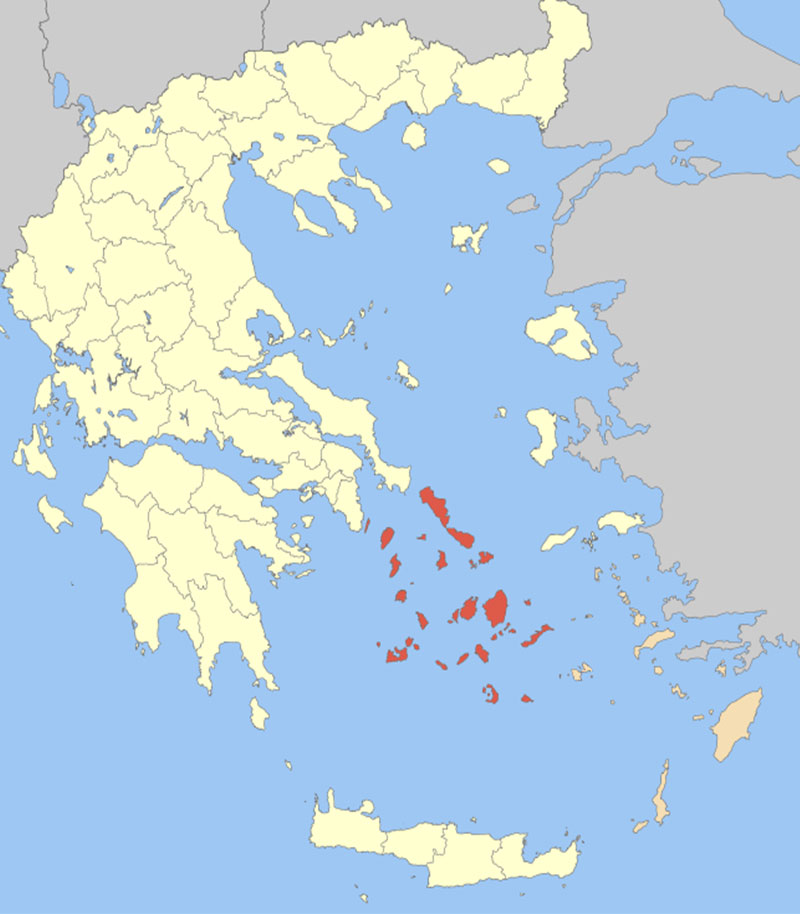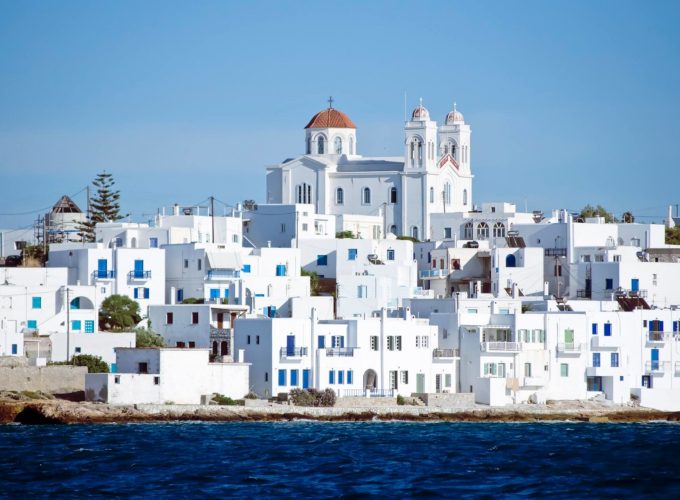The significant Late Neolithic and Early Bronze Age Cycladic culture is best known for its schematic, flat sculptures carved out of the islands’ pure white marble centuries before the great Middle Bronze Age Minoan civilization arose in Crete to the south. (These figures have been looted from burials to satisfy a thriving Cycladic antiquities market since the early 20th century.)
A distinctive Neolithic culture amalgamating Anatolian and mainland Greek elements arose in the western Aegean before 4000 BCE, based on emmer and wild-type barley, sheep and goats, pigs, and tuna that were apparently speared from small boats (Rutter). Excavated sites include Chalandriani, Phylakopi, Skarkos, Saliagos and Kephala (on Kea) with signs of copperworking, Each of the small Cycladic islands could support no more than a few thousand people, though Late Cycladic boat models show that fifty oarsmen could be assembled from the scattered communities (Rutter), and when the highly organized palace-culture of Crete arose, the islands faded into insignificance, with the exception of Delos, which retained its archaic reputation as a sanctuary throughout antiquity and until the emergence of Christianity.
Archaeology
Ancient theatre, Delos
The first archaeological excavations of the 1880s were followed by systematic work by the British School at Athens and by Christos Tsountas, who investigated burial sites on several islands in 1898–1899 and coined the term “Cycladic civilization”. Interest lagged, then picked up in the mid-20th century, as collectors competed for the modern-looking figures that seemed so similar to sculpture by Jean Arp or Constantin Brâncuși. Sites were looted and a brisk trade in forgeries arose. The context for many of these Cycladic figurines has been mostly destroyed and their meaning may never be completely understood.
Another intriguing and mysterious object is that of the Cycladic frying pans. More accurate archaeology has revealed the broad outlines of a farming and seafaring culture that had emigrated from Anatolia c. 5000 BCE. Early Cycladic culture evolved in three phases, between c. 3300 – 2000 BCE, when it was increasingly swamped in the rising influence of Minoan Crete. The culture of mainland Greece contemporary with Cycladic culture is known as the Helladic period.
In recent decades the Cyclades have become popular with European and other tourists, and as a result there have been problems with erosion, pollution, and water shortages.






